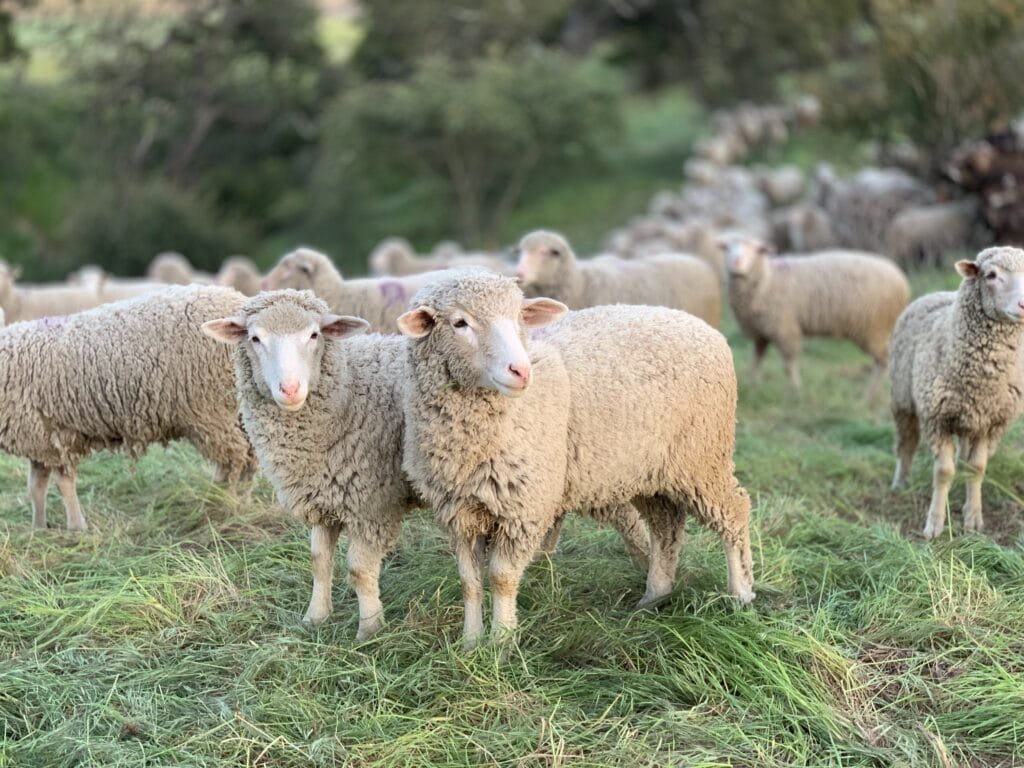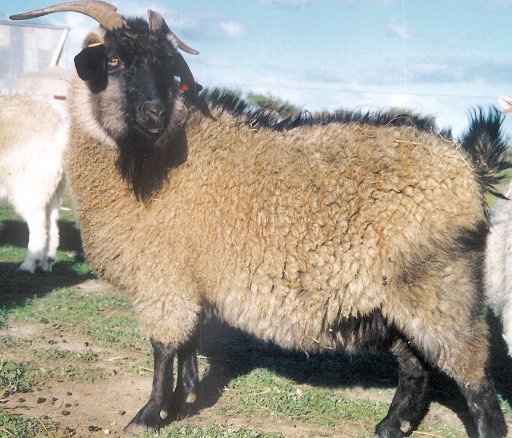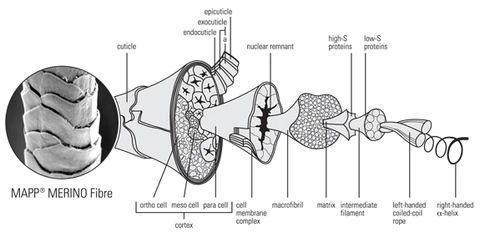Clever by design
Nature has come up with an ingenious solution to protect the skin of sheep, but coat it in a protein rich fiber that is able to adapt to its external environment.
Temperature regulation
Wool reacts to changes in body temperature and adjusts accordingly. If it gets too cold, it warms up you up, making it ideal for not only clothes, but also blankets and bed linen. On the other hand, if it gets too warm, it cools you down.
How does it do that?
As discussed in one of previous article, wool is made up of a protein called Keritins. The very design of these fibers allows for super small pockets of air to form, these pockets trap your natural body heat between your skin and the fibers, making an insulating layer that you guessed it, keeps you warm.
The layers of proteins within wool fibre act likes overlapping scales, causing water to essentially fall off of it whilst absorbing the water vapour between the small gaps.
Warmth generation
Wool is one of the most popular and widespread materials for winter clothes, blankets, and pretty much anything that helps us keep warm.
The water vapour within the fibres is what naturally generates heat, as when the vapour condensates into liquid it warms the air around it. There is some amazing research conducted on it from the CSIRO in Australia here.
“A kilogram of dry wool placed in an atmosphere of air saturated with moisture releases about the same amount of heat as that given off by an electric blanket running for eight hours.” CSIRO

It’s Highly Absorbent
Wool can absorb up to 30% of its weight in moisture, so it will steel feel warm even when it’s wet, which makes it ideal for cold temperatures, as well as warm ones. It’s also moisture-wicking, which wicks away excess moisture to keep it naturally dry.
This heating and insulation qualities is why typically wool is used within several layers of clothing, but mainly as a base layer. This breathability ensures that you don’t sweat and have the clothes sticking to your body, reducing heat and circulation. When it does absorb the water, it slowly seeps into the fibre, but heats at the same time to keep you dry and fresh.

It’s A Bad Conductor of Heat
Materials that are able to conduct heat absorb it and spread it across the surface areas. Wool is naturally bad conducting material of heat, it insulates the heat inside, trapping it and keeping us warm.

Takeaway
Overall, wool is the ideal material to keep ourselves warm to due its natural properties and natural resistance to water. Whether you’re using it for lining, outerwear or bed linen, it’s guaranteed to keep you warm in the cold and cool in the heat.

